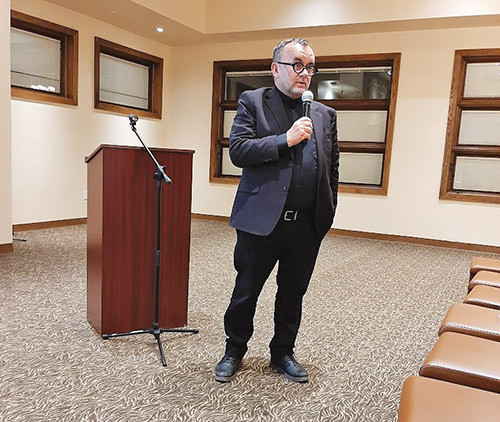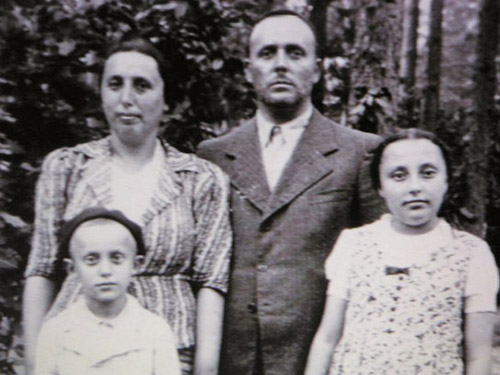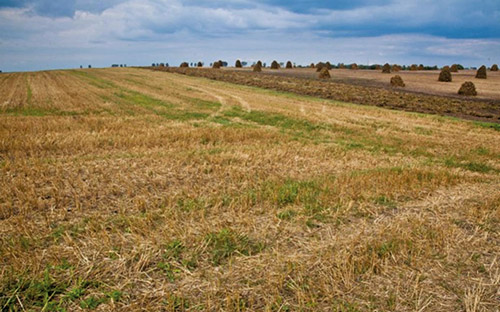
In the Ukrainian town of Rawa-Ruska its mayor took Rev. Patrick Desbois deep into the forest where they were met by 50 elderly villagers waiting at what the mayor told him was the mass unmarked grave of the last Jews of Rawa-Ruska.
Those villagers were eyewitnesses to the Nazi death squad shooting and burying of Jews—the elderly, infants, pregnant women. Before leaving, the mayor whispered to the French priest, “What I did for you in one village, I can do for you in 100 villages.”
In the ensuing years, Rev. Desbois has become the voice for those forgotten victims whose stories of suffering and fates lay buried in fields, forests and ravines throughout Eastern Europe.

He had come to the small town, where his grandfather had been held as a German prisoner of war, looking for answers to the only thing his grandfather would ever say about his imprisonment, “It was even worse for those outside” the POW camp.
To this day he doesn’t know why the mayor chose to confide that chilling last bit of information about the multitude of mass Jewish graves, but it haunted him and led him on a lifelong mission to tell the world about those victims.
“To tell you the truth I wanted to run back to France,” he told a gathering of about 80 April 17 at the Eva and Arie Halpern Hillel House at Rutgers University in New Brunswick. The program featured a Yom Hashoah candle-lighting ceremony for the 6 million and was co-sponsored by the Catholic Student Association, Rutgers University Student Assembly and the Department of Jewish Studies.
Rev. Desbois founded Yahad iN Unum in 2004—the name means together in Hebrew and Latin—where he is now president, which has documented more than 2,700 mass Jewish graves throughout Eastern Europe—in Ukraine, Poland, Russia, Romania, Lithuania and elsewhere.

He finds remnants of the lives lost and forgotten. Often it’s jewelry taken off and thrown in or near mass grave sites by women who didn’t want it to fall into Nazi hands—wedding rings, Magen Davids, bracelets. In one grave he found 23 wedding rings.
He tells these victims each time, “I finally found you.”
Rev. Desbois is the author of three books, “The Holocaust by Bullets,” “In Broad Daylight,” which won a National Jewish Book Award, and with Costel Nastasie, “The Terrorist Factory,” about the Yazidi genocide, He has won numerous awards from Jewish organizations and the Legion d’honneur, France’s highest honor, for his wok documenting the Holocaust and received honorary doctorates from a number of universities. The former head of the Commission for Relations with Judaism of the French Bishops’ Conference, he is currently the inaugural Braman Endowed Professorship of the Practice of the Forensic Study of the Holocaust at the Center for Jewish Civilization at Georgetown University.
The shocking revelations Rev. Desbois heard as he talked to eyewitnesses were often shared for the first time because “no one ever asked.”
While the atrocities at concentration camps are known through their survivors, less known is that nearly half the 6 million Jews murdered in the Holocaust were shot.
“They never left one Jew alive,” he said as the shooting squads went from village to village. “They never left one body. It was a total eradication of Jews one by one.”
In fact, Auschwitz, where 1.5 million lost their lives, was Hitler’s biggest mistake because “buses arrive every day,” with tourists looking to see its gas chambers, ashes, shoes and barracks left behind as lasting proof of its horrors for generations to come.
But at mass burials sites, Desbois noted, “There are no train tracks, no March of the Living, no barbed wire,” surrounding these graves, not even a memorial marker, adding, “Jews don’t even know..”
Succeeding genocide perpetrators have taken that lesson to heart in Darfur in Syria and elsewhere, leaving no trace behind of their victims so they eventually will be forgotten, said the priest, adding, “Where are the victims? In mass graves. Nobody cares..”
However, Dubois and his organization have spoken to 8,000 European eyewitnesses, several videos of whom were shown at Hillel, and spoke of others. Most told graphic, detailed stories of villagers watching the shooting take place, ensuring the victims’ lives and deaths will not be forgotten or denied by history.
Rev. Desbois initially thought those who watched must be psychopaths or monsters but came to realize for them it was much like the attraction of people stopping to gape at a serious car accident. And if they weren’t Jewish, a Gypsy, communist or gay they felt safe. He heard the phrase “it was interesting for children” repeated hundreds of times.
But he also heard horror stories from those witnesses who were then children. One woman said she was forced to help dig the grave or she too would be shot. Another woman said she was forced to collect body parts of Jews from a grave into which the Germans had thrown explosives and hide them in trees. Another told of 34 Jewish girls held as “sex slaves” by the Germans who later shot them when many became pregnant.
Another person said as a 4-year-old he lined up with other children as Jews were being shot into a grave by bullets on one end of a table while a German soldier was handing out candy to children from a box at the other end of the table.
The Germans allotted “one bullet for one Jew” leading some to describe graves where the ground continued to move where people were buried while still alive.
The priest and his organization has now turned their attention to also documenting the genocides of Yazidis in Iraq by ISIS and the bloody internal war in Guatemala that between 1960-1996 claimed 250,000 lives and resulted in countless cases of mutilation, torture and rape.
His work It has led Rev. Desbois to realize sad truths: “Genocide is a human disease,” and “Everybody can be a killer and everyone can be a victim.”
He warned of the need to educate others and realize that terrorists and those perpetrating genocide know most people don’t want to think about what they do.
“I know you are a strong community and a strong country, but you have a lot of hate groups who don’t like Jews and are just waiting for the opportunity,” he warned and gave his own experience as an example.
When he returns to his apartment in Paris the priest has been cautioned by authorities to be careful because his association with Jews has made him a target.
“I must Uber when I go out,” he said. “I cannot walk in my own city.”
By Debra Rubin









